International Exotic Animal Sanctuary, Texas, United States
4.5 (40 reviews) Tuesday: 8:00 AM - 4:00 PM Spent Ranking #1 in Boyd Nature & Wildlife Areas

Wonderful!
I have been meaning to write about our wonderful visit here in January for months; that’s how much the place stuck with me. I am not a fan of zoos but have a great appreciation for animal sanctuaries since I began volunteering at one on the east coast. This sanctuary shows how much they care about the animals they’ve rescued. The habitats are far more spacious than others I’ve seen and the array of animals they care for is amazing. We had a very informative tour guide and met some of the interns who are learning to care for the beautiful creatures. The animal trade is awful and places like this give the animals a place to retire in peace and as much comfort as possible not being in their natural habitats because of unthinking and selfish humans.
Address
Rte. 114 , Boyd, Texas, United States.
Mobile
Website
http://www.bigcat.org/
Working hours
Monday : 8:00 AM - 4:00 PM
Tuesday : 8:00 AM - 4:00 PM
Wednesday : 8:00 AM - 4:00 PM
Thursday : 8:00 AM - 4:00 PM
Friday : 8:00 AM - 4:00 PM
Saturday :
Sunday :
Current local date and time now
Tuesday, May 14, 2024, 17:16
User Ratings
4.5 based on (40 reviews)
Reviews
-
4raj0302 5:00 PM Jan 22, 2017
Educational and informative animal sanctuary
If this review is useful, please give me a “helpful” vote. 1. This was my first visit to the International Exotic Animal Sanctuary. I thoroughly enjoyed myself; this was a very enjoyable and morning. If I am in the area again in the Spring or Fall, I will visit again in order to be able to see more of the animals. 2. Expectations. I am a big fan of zoos and aquariums but am particularly interested in facilities like this. I have visited four other similar facilities in Florida. Be advised that this is not a zoo but rather a non-profit wildlife sanctuary. It is not open to the public for un-scheduled tours but rather offer limited, regularly scheduled tours. During the guided tour (un-guided tours are not available), visitors go at their own pace and can linger at each enclosure and ask the tour guide questions/discuss the details of each animal. Visitors are able to get approximately six feet from the animal enclosures. 3. Information. To the best of my recollection, all of the animals came to the sanctuary in one of the following situations. 3.a. Animals that were seized because they were illegally obtained/kept. 3.b. Animals that were legally obtained/kept but were seized because they were kept in substandard/small enclosures. 3.c. Animals that were legally obtained/kept but were relinquished to the sanctuary because the owners could no longer adequately care for them. 3.d. Animals that were obtained from other similar sanctuaries. 4. Location/directions. The facility is east of the town of Boyd on Texas Highway 114. There is a sign at the entrance to the facility that reads “Exotic Animal Sanctuary”. 4.a. If approaching from the West. From the intersection of Texas Farm Road 730 and Texas Highway 114, proceed eastward on Texas Highway 114 for 1.9 miles; the entrance to the facility is on the left side of the road. 4.b. If approaching from the East. From the intersection of US Highway 287 and Texas Highway 114, proceed westward on Texas Highway 114 for 2.8 miles; the entrance to the facility is on the right side of the road. 5. Access/parking 5.a. Passenger vehicles. The parking lot is accessible to any type of passenger vehicle. Parking is free and is on an un-paved gravel lot. There is parking for approximately 8 vehicles. 5.b. RVs and vehicles pulling trailers. I was not in an RV or pulling a trailer during my visit but I understand that many people who are visiting sites like this are on vacation and may be in an oversize vehicle. I would estimate that this site is not easily accessible by an RV or by a truck pulling a travel trailer. I would recommend looking at the facility on Bing or Google Maps to get an idea of accessibility. 6. Tour Hours. If I remember correctly, tours are conducted as follows (I would recommend calling to confirm): 6.a. Mon-Fri. 11:00 AM 6.b. Sat & Sun. 11:00 AM and 2:00 PM. 7. Admission Fee (obtained from the sanctuary’s website). They ask for a $20.00 donation per adult and $10.00 per child. 8. Length of visit/type of visit. 8.a. Type of tour. The facility only offers guided tours; self-guided tours are not available. 8.b. Length of tour. My tour lasted approximately 2 hours; the length depends on how long you want to linger at each animal enclosure and how many questions you have. 9. Staff. If I remember correctly, the staff consisted of employees, volunteers and interns. My guide (Denise) introduced each animal by name and explained the circumstances that brought the animal to the facility. She is very knowledgeable and obviously cares a great deal for the animals. She also took us to the kitchen where all of the animals’ meals are prepared and explained what each animal ate (and how much/how often). 10. Details of my visit. I visited on Tuesday 2 January 2017 (11:00 AM – 1:00 PM). There was another group on my tour (a family of three). 11. Grounds and landscaping. The animal habitats/enclosures are large and contain natural vegetation, artificial water features and enclosures (houses) that permit the animals to have privacy. I believe that the entire facility is approximately 55 acres. 12. Animals. The following animals were at the sanctuary (I may be forgetting one or two): 12.a. Ring Tailed Lemur. Very docile small primate native only to the island of Madagascar on the southeast coast of Africa. They have one. 12.b. Coati Mundi. This is a member of the Racoon family native to Mexico, Central America and South America. I believe they have one pair. 12.c. Capabyra. This is a very large rodent native to South America. They have one. 12.d. American Gray Wolf. Large canine native to the American North and Northwest. They have two; they are both very light-colored and relatively small. 12.e. Bobcat. This is a small gray, brown, spotted cat native to most of North America. I believe they have 3. 12.f. Mountain Lion. This is a large cat native to the western United States. I believe they have two. I did not see them on the day of my visit (they were in their houses). 12.g. Jaguar. This is a large, beautiful orange, black and white spotted cat native to isolated pockets in Mexico, Central American and South America. They have one. I was very disappointed that he did not come out of his house on the day of my visit. I have been to several other exotic animal sanctuaries and have yet to see one. 12.h. African Lion. This is a large cat now primarily native only to sub-Saharan Africa. They have a male and a female. I did not see the female. The male is very striking with a full, dark mane. 12.i. Bengal Tiger (white and orange). Large cat now primarily residing only on the Indian sub-continent. They have approximately six. Some of these were in very large pens in the open, others were in pens with a great deal of overhead cover and shade. All of the tigers had large water troughs available for them to cool off. 12.j. American Black Bear. These bears range across Canada and exist in scattered pockets across the United States. They have approximately twelve. Some were in smaller enclosures and easily seen; others were in extremely large enclosures and seldom seen. These range in size from medium to very large. It was entertaining to see one of them lounging in some tree branches approximately 20 feet off of the ground. 12.k. Asiatic Black Bear. This is a medium-size bear that now exists in scattered pockets of southeast Asia. They have one. 12.l. Grizzly Bear. This is a very large bear that ranges across Alaska, Canada and isolated pockets in the Northwestern US. I believe they have four. Since I visited in December, I did not see them – they were hibernating. 13. Handicap access. I am not handicapped but understand that this can affect someone's decision whether or not to visit a site/attraction. Visitors who are wheelchair-bound or have mobility problems should be aware that this is a walking tour that requires visitors to walk approximately 1mile on an uneven gravel path. 14. Permissions/Prohibitions (obtained from the santuary’s website). 14.a. Children under 7 years of age are not permitted on the tours. 14.b. Photography is permitted. 15. Child friendliness. I would consider this facility to be child-friendly. 16. Amenities/creature comforts 16.a. Gift Shop. There is a small gift shop that has a small selection of t-shirts, etc. that are primarily oriented towards children. 16.b. Toilets. A restroom is located in the Gift Shop at the entrance. 16.c. Water Fountains. I believe there were water fountains at the Gift Shop. If it is a hot day, I highly recommend taking bottled water or a hydration system. 17. Terrain. The two hour tour will require visitors to walk along gravel walkways that are on gently-sloping to moderately-sloping ground. Most of the paths are shaded by large oak trees. 18. Recommended clothing and equipment. Visitors will be at the facility for approximately two hours. Depending on the weather, the following are recommended: sunscreen; hat; water, closed toe shoes or sandals that are secured around the heel (not flip-flops); fleece jacket; camera. 19. Other similar facilities that I can personally recommend. 19.a. Live Oak Wildlife Conservation; Yulee, FL (north of Jacksonville – near the Georgia border). This facility is much larger than the others and is not a rescue facility – they are a robust wildlife breeding facility with a staff of veterinarians. They breed animals for distribution to other zoos and wildlife refugees and also reintroduce endangered animals back to their native habitats. They only offer guided tours (on a trolley) and are a little pricey (and rightfully so) but are well-worth the visit. 19.b. St Augustine. Wildlife Reserve; St Augustine, FL. They have a wide variety of animals – I believe the majority of them are rescues. Rescues are defined as: animals imported illegally and seized by Florida Fish and Wildlife; animals imported legally but seized by Florida Fish and Wildlife because they were kept in substandard enclosures or treated inhumanely; or those imported legally but were surrendered by their owners because they could no longer take care of them. They only offer guided tours. 19.c. Carson Springs Wildlife Refuge; Gainesville, FL. They have a wide variety of animals; some are rescues and others have been obtained from other similar facilities. Of note, they have: Cheetahs, Spotted Hyenas; Clouded Leopards; a beautiful Amur Leopard; Jackals; Lions, Tigers, Cougars, Servals, Ocelots, and several species of Lemurs. 19.d. Big Cat Rescue; Tampa, FL. If I remember correctly, they have: Lions, Tigers, Leopards, Cougars, Caracals, Ocelots, Servals, Lynxs and Bobcats. They only offer guided tours. They have a unique aspect in that they rotate some cats from their normal enclosure to a much larger enclosure for a week or so; they refer to this as sending the cats on vacation. Once they arrive, all of their cats remain there the rest of their lives – they are not traded or sold – very admirable. The only exception to the previous rule is that Bobcats may be released into the wild since they are native to Florida.
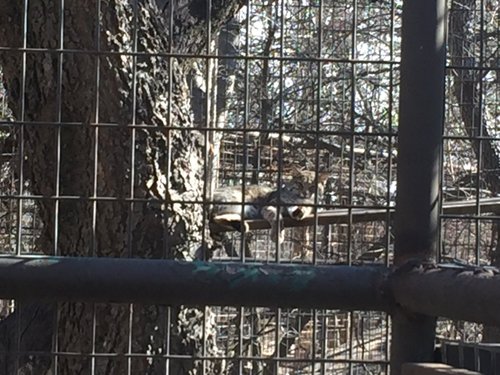


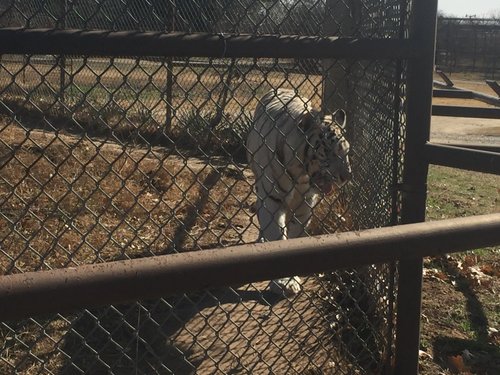
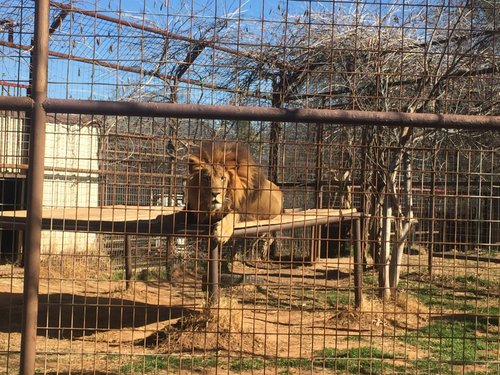

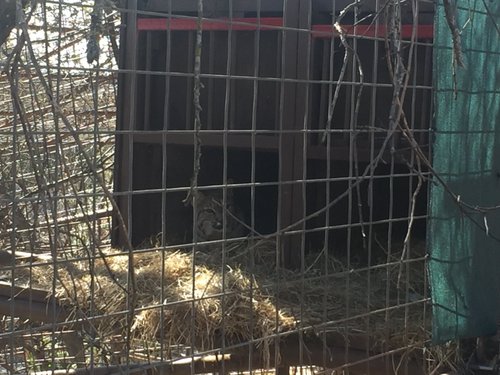
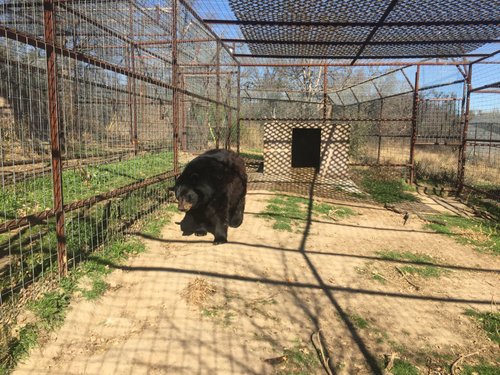



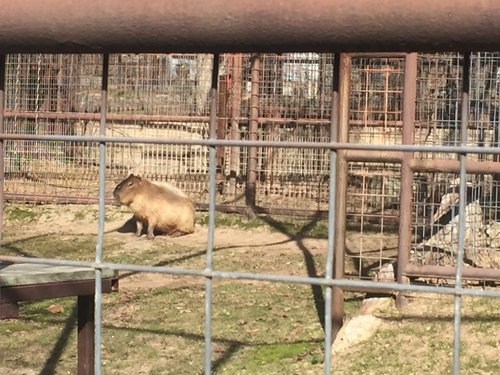
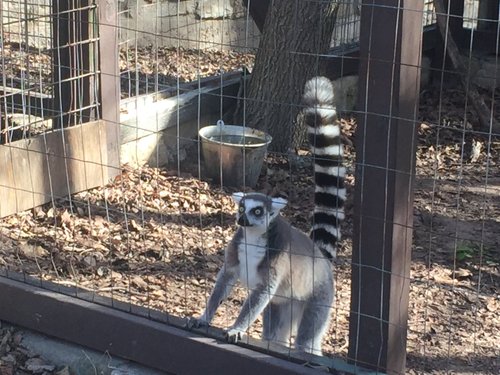
-
5catfest 5:00 PM Jun 13, 2010
This is as close as you'll ever want to be to wild animals!
My husband and I have been here several times over the years; we always bring out of town guests because it is not only a spectacular tour, but we like to support their efforts. Although many of the animals come with sad stories, it is wonderful to see how happy they are now (most of them anyway...). You will get much closer to the animals than you will at a zoo, and you will come away with a better feeling about captive animals than you might at a zoo. Here, the animals are given as much attention as they wish, never go hungry, and are respected as the wild creatures that they are. That's not to say that you won't occasionally see an owner inside the enclosure of the pet that they are boarding; not all animals were abandoned or seized. These are magnificent animals and it is well worth the drive to see them and to support this worthy cause.